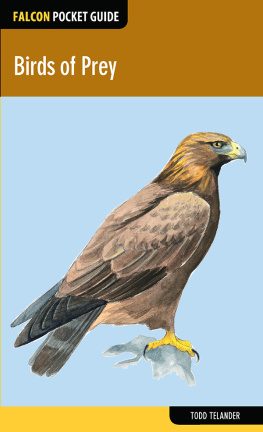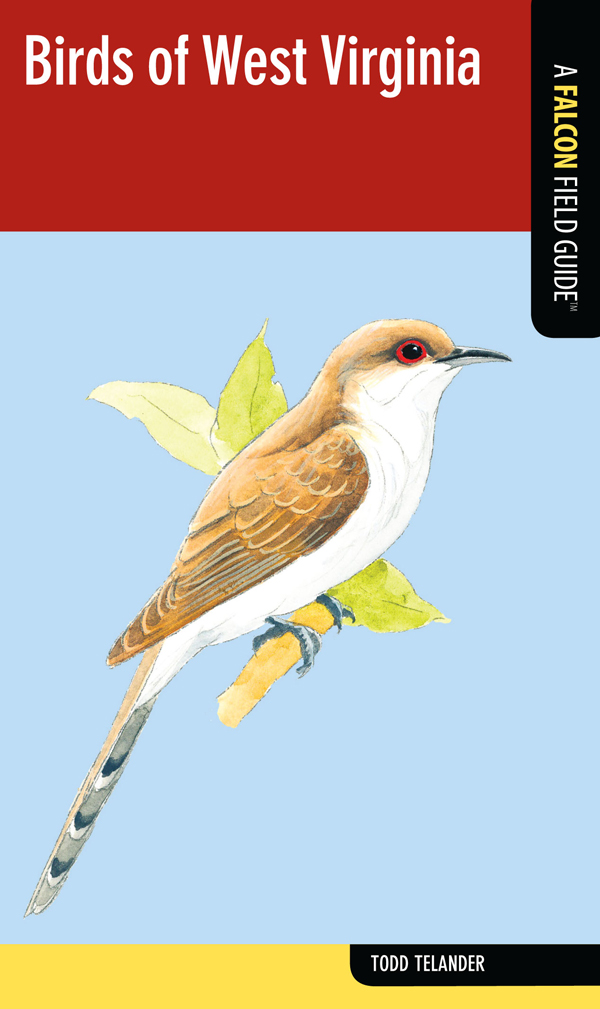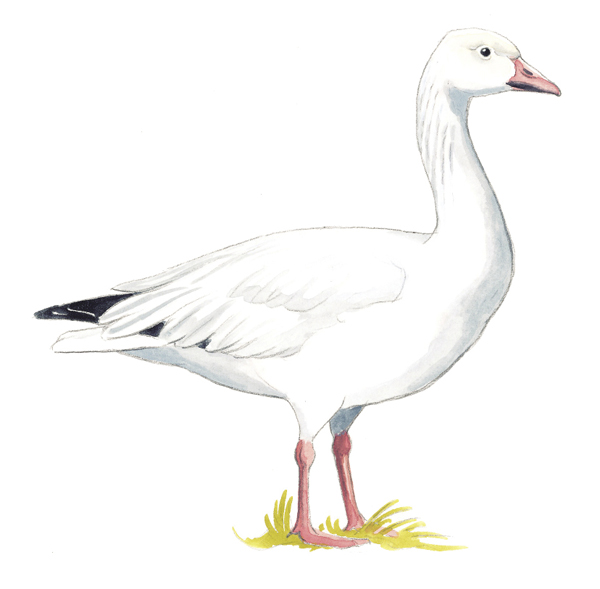Birds of West Virginia
Todd Telander
To my wife, Kirsten, my children, Miles and Oliver, and my parents, all of whom have supported and encouraged me through the years. Special thanks to Mike Denny for his expert critique of the illustrations.
Copyright 2013 Morris Book Publishing, LLC
Illustrations 2013 Todd Telander
ALL RIGHTS RESERVED. No part of this book may be reproduced or transmitted in any form by any means, electronic or mechanical, including photocopying and recording, or by any information storage and retrieval system, except as may be expressly permitted in writing from the publisher. Requests for permission should be addressed to Globe Pequot Press, Attn: Rights and Permissions Department, PO Box 480, Guilford, CT 06437.
FalconGuides is an imprint of Globe Pequot Press.
Falcon Field Guides is a trademark and Falcon, FalconGuides, and Outfit Your Mind are registered trademarks of Morris Book Publishing, LLC.
Illustrations: Todd Telander
Project editor: David Legere
Text design: Sheryl P. Kober
Layout: Sue Murray
Library of Congress Cataloging-in-Publication data is available on file.
ISBN 978-0-7627-9249-8
Contents
Introduction
West Virginia, aptly named the Mountain State, is one of Americas most rugged regions. Hills and plateaus dissected by rivers dominate most of the west and central state, while the jagged ridges and narrow valleys of the Appalachian Mountains form the highest elevations in the east. Although landlockedand thus isolated from marine influencethe topographical variety, rich river systems, and lush hardwood forests provide for an incredible number and variety of bird species. West Virginia supports habitat for resident breeders (most notably a substantial array of wood-warblers), seasonal visitors (such as many wintering waterfowl species), as well as those birds passing through on migration to and from South America and Canada. Although West Virginia is home to or visited by more than 300 species of birds, this guide describes some of the most common birds you are likely to encounter and will give you a good start to understanding the birdlife here.
Notes about the Species Accounts
Order
The order of species listed in this guide is based on the latest version of the Checklist of North American Birds, published by the American Ornithologists' Union. In an effort to remain current, I have used the most recent arrangement, so the arrangement of some groups, especially within the nonpasserines, may be slightly different than that of older field guides.
Names
For each entry I have included the common name as well as the scientific name. Since common names tend to vary regionally or there may be more than one common name for each species, the universally accepted scientific name of genus and species (such as Hylocichla mustelina, for the Wood Thrush) is more reliable to be certain of identification. Also, you can often learn interesting facts about a bird by the English translation of its Latin name. For instance, hylocichla refers to forest, the Wood Thrushs favored habitat, and mustelina refers to the weasel-like color of its plumage.
Families
Birds are grouped into families based on similar traits and genetics. When trying to identify an unfamiliar bird, it is often helpful to first place it into a family, which will limit your search to a smaller group. Study the general characteristics of each bird family, paying particular attention to bill size and shape, behavior, and habitat. And when you identify a bird, try to note why it is put into its particular family. For example, most wood-warblers have relatively delicate, thin bills, while sparrows and finches have thick, short bills. So if you see an unfamiliar little songbird, a glance at its bill will give you a good indication whether to focus on the Parulidae family (wood-warblers) or the Emberizidae (sparrows) or Fringillidae (finches) families.
Size
The size listed for each bird is the average length, from the tip of its bill to the end of its tail, if the bird was laid out flat. Sometimes females and males vary in size, and this is mentioned in the text. Size can be misleading if you are looking at a small bird that happens to have a very long tail or bill. It may be more effective to use the birds relative size or judge the size difference between two or more species.
Season
The season provided in the accounts is when the greatest number of individuals occurs in West Virginia. Some species are year-round residents that breed here. Others may spend only summers or winters in the state, and some may be transient, only stopping during the spring or fall migration. Even if only part of the year is indicated for a species, be aware that individuals may arrive earlier or remain for longer than that time frame. Plumage also changes with the season for many birds, and this is indicated in the text and illustrations.
Habitat
A birds habitat is one of the first clues to its identification. Note the environment where you see a bird and compare it with the description listed. This can be especially helpful when identifying a bird that shares traits with related species. Pay attention to vegetation type and size, proximity to water, elevation, and temperature. Some birds are very specific about their surroundings, while others can be found in many locales.
Illustrations
Illustrations show the adult bird in the plumage most likely to be encountered during the season(s) it is in West Virginia. If it is likely that you will see more than one type of plumage during this time, the alternate plumage is shown as well. For birds that are sexually dimorphic (females and males look different), I have usually included illustrations of both sexes. Other plumages, such as juveniles and alternate morphs, are described in the text.
Bird Topography and Terms
Bird topography describes the outer surface of a bird and how its various anatomical structures fit together. Below is a diagram outlining the terms most commonly used to describe the feathers and bare parts of a bird.
NONPASSERINES
GEESE, DUCKS, MERGANSERS
Snow Goose, Chen caerulescens
Family Anatidae (Geese, Ducks, Mergansers)
Size: 28"
Season: Spring and fall migrant
Habitat: Grasslands, marshes
Snow Geese visit West Virginia en route between their southern and eastern wintering grounds and their Canadian breeding grounds. The Snow Goose has two color forms: the blue and the more common white. The white form is predominantly white, with black outer wing feathers and a pale yellowish wash to the face during summer. The blue form retains the white head and lower belly but is otherwise dark slate gray or brownish gray. In both morphs its pink bill is thick at the base and has a black patch where the mandibles meet. Legs of both types are pink. Snow Geese feed mostly on the ground, consuming shoots, roots, grains, and insects. The similar Rosss Goose is smaller, with a shorter bill. A white morph adult is illustrated.








